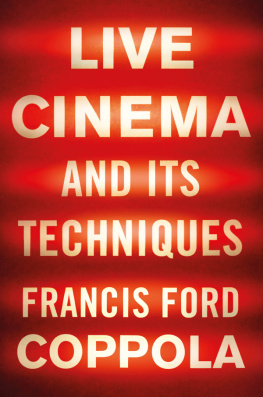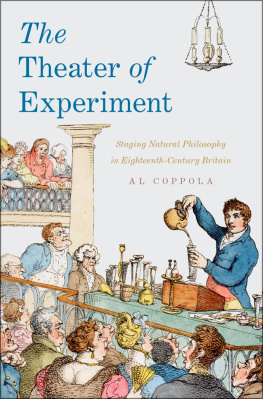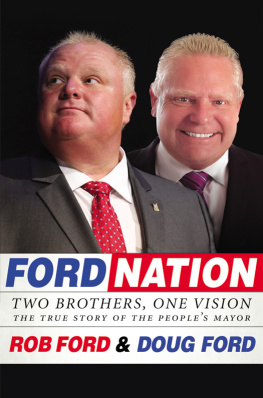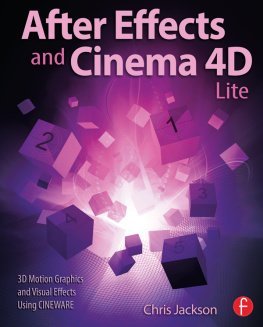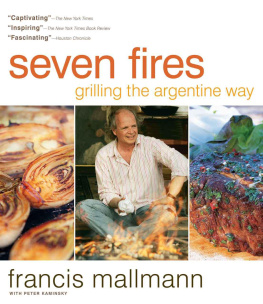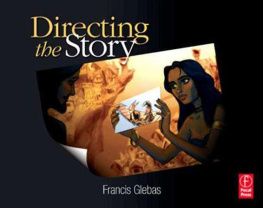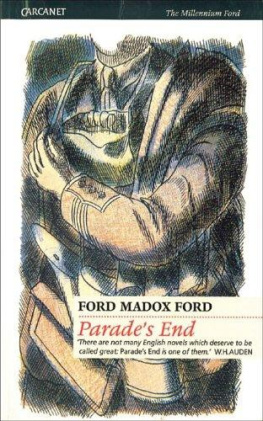Francis Ford Coppola - Live Cinema and Its Techniques
Here you can read online Francis Ford Coppola - Live Cinema and Its Techniques full text of the book (entire story) in english for free. Download pdf and epub, get meaning, cover and reviews about this ebook. year: 2017, publisher: Liveright, genre: Home and family. Description of the work, (preface) as well as reviews are available. Best literature library LitArk.com created for fans of good reading and offers a wide selection of genres:
Romance novel
Science fiction
Adventure
Detective
Science
History
Home and family
Prose
Art
Politics
Computer
Non-fiction
Religion
Business
Children
Humor
Choose a favorite category and find really read worthwhile books. Enjoy immersion in the world of imagination, feel the emotions of the characters or learn something new for yourself, make an fascinating discovery.
- Book:Live Cinema and Its Techniques
- Author:
- Publisher:Liveright
- Genre:
- Year:2017
- Rating:3 / 5
- Favourites:Add to favourites
- Your mark:
- 60
- 1
- 2
- 3
- 4
- 5
Live Cinema and Its Techniques: summary, description and annotation
We offer to read an annotation, description, summary or preface (depends on what the author of the book "Live Cinema and Its Techniques" wrote himself). If you haven't found the necessary information about the book — write in the comments, we will try to find it.
Live Cinema and Its Techniques — read online for free the complete book (whole text) full work
Below is the text of the book, divided by pages. System saving the place of the last page read, allows you to conveniently read the book "Live Cinema and Its Techniques" online for free, without having to search again every time where you left off. Put a bookmark, and you can go to the page where you finished reading at any time.
Font size:
Interval:
Bookmark:

ALSO BY FRANCIS FORD COPPOLA
The Godfather Notebook
LIVE
CINEMA
AND ITS TECHNIQUES
FRANCIS FORD COPPOLA

Liveright Publishing Corporation
A Division of W. W. Norton & Company
Independent Publishers Since 1923
New York London
Copyright 2017 by Giostyle LLC
All rights reserved
First Edition
Photograph on page 82 courtesy of Byron Company, New York, NY / Museum of the City of New York. 54.380.102.
For information about permission to reproduce selections from this book, write to
Permissions, Liveright Publishing Corporation, a division of
W. W. Norton & Company, Inc., 500 Fifth Avenue, New York, NY 10110
For information about special discounts for bulk purchases, please contact
W. W. Norton Special Sales at specialsales@wwnorton.com or 800-233-4830
Book design by JAMdesign
Production manager: Julia Druskin
Jacket design by Brian Barth
ISBN 978-1-63149-366-9
ISBN 978-1-63149-373-7 (e-book)
Liveright Publishing Corporation
500 Fifth Avenue, New York, N.Y. 10110
www.wwnorton.com
W. W. Norton & Company Ltd.
15 Carlisle Street, London W1D 3BS
TO JOHN FRANKENHEIMER
THE PIONEER
CONTENTS
S ince the early 1990s, the cinema has transformed itself from a photochemical-mechanical medium to an electronic-digital one. It is a revolutionary process that seems to have just happened, but it actually occurred in small increments, the transition beginning in sound, then in editing, then digital cinematography, and finally, theatrical projection. The cinema is now just about wholly digital. Yet our love and respect for film masterpieces, from the silent era through the era of talkies and beyond, including extraordinary cinematic work around the globe, inspires us to make our new electronic cinema do little more than emulate the films of the past.
Many young filmmakers are loathe to abandon film, not realizing that it has already abandoned them. The Eastman Kodak factory in Rochester, New York, that used to employ over 3500 workers is now down to 350 as the need for Kodak film has shrunk to accommodate those few filmmakers (my own daughter Sofia one of them)who prefer working the old way. This inclination to use film is touching and totally understandable. Film and its traditions remain beloved. There even remain still photographers who make their own glass plates with emulsion of silver halides, as the results are so beautiful. No doubt there will always be a few passionate souls who will try to create photochemical film after none is manufactured. But the unalterable fact confronts us that cinema is now primarily an electronic-digital medium.
I have to believe that this change will profoundly influence the essence of the cinema, no matter how much we revere those many great works made on photographic film, taking us in new directions. What will these new directions be?
In the digital world, moviemaking can now be performed by directors collaborating on the internet, using game pads, joysticks, keyboards, and touch screens, all the devices of internet gaming. They can engage in play across geographical boundaries, perhaps even viewed by large audiences in auditoriums. And they can engage in role-playing games, identifying with and controlling individual characters and at the same time helping to create the defined worlds that are the settings. Virtual reality, with its point-of-view perception of the main characters, may create new formats; and movies themselves may be performed live, shown at theaters, in community centers, and in homes around the world. Eventually cinema auteurs may emerge who can use this format to create literature at its highest level, in ways I cannot yet imagine.
Of course, we have lived with live television since television was first inventedin fact, television was dominated by live programming until well into the 1950s and the development of videotape technology. But my own interest, Live Cinema, has only just appeared in this second decade of the twenty-first century. The purpose of this book is not to indulge in nostalgia, whether for live television or for the early days of filmmaking, but to explore this new medium, to discover how it is different from other creative forms, what its virtues and requirements are; and especially, to look at how it can be used and taught.
In its essence this new medium is cinema, not a television play, but conceived as cinema and yet not losing the thrill of a living performance. Thinking about all of the implications, I wanted to learn morenot just by talking about what Live Cinema might be, but by actually doing it. So I launched two experimental proof-of-concept workshops, one in the facilities of Oklahoma City Community College in 2015, and another a year later at UCLAs School of Theater, Film and Television. I learned a great deal from both workshopsmy journal from OCCC is included in the appendix, followed by credits from both workshopsand, brimming over with knowledge and facts that I really hadnt digested, I decided to write them down in a user-friendly book. This is that book.
What you are about to read then is a manual, a guide through the many intricate issues one confronts when attempting to do a Live Cinema performance, from the all-important matters of the actors and how to rehearse them to the details of making use of sophisticated technology that was originally invented for television sports. Of course it is my dream to one day do a major Live Cinema production based on my own writing, but should the many reasons I cannot do this prevail, I hope that those who come after me will read this record of what I have learned from my Live Cinema workshops, and use it to work in this new art form.
B orn in 1939 and being as a child of a scientific leaning, I was drawn to and fascinated by the new wonder of my time, television. My father, who was a classical musician and first-chair flutist in the Toscanini NBC Symphony Orchestra, was also fascinated by innovation. He was the son of a master tool and die maker who had engineered and built the Vitaphone, the machine that made movies talk. In my earliest memories, my father was always bringing home the latest devices from the shops along New York Citys Radio Row: the Presto home acetate recorder, the wire and tape recorder, and then the first television set. I was seven, the perfect age to operate these things, so when our small-screen Motorola TV showed up in our Long Island home, I was in heaven.
True, in 1946 there was hardly any programming, so I spent hours watching the geometric test patterns, waiting for something to begin. I can remember the early shows. Howdy Doody looked nothing like the famous puppet in later years; he was then a lanky hayseed with blond hair whose face became wrapped in bandages because he was running for President, we were told, and had gone through plastic surgery. Of course, we kids knew nothing of the copyright suit going on, when the creator of the puppet refused to cede the rights to his character, and a new puppet design, this one with rights intact, had to be introduced to the audience. There were a few Allied Artists cowboy movies coming over on Channel 13 from New Jersey, and the DuMont Television Network offered shows on Channel 5, including Captain Video and His Video Rangers . When I was nine years old, I was paralyzed from polio. I became a prisoner in my room with the television my focus, along with some puppets, a tape recorder, and a toy 16mm movie projector. For a year I saw no children other than my brother and sister. With pleasure and longing, I watched the Horn and Hardarts Childrens Hour , where talented children performed, and the most gorgeous little girls in the world sang and danced.
Next pageFont size:
Interval:
Bookmark:
Similar books «Live Cinema and Its Techniques»
Look at similar books to Live Cinema and Its Techniques. We have selected literature similar in name and meaning in the hope of providing readers with more options to find new, interesting, not yet read works.
Discussion, reviews of the book Live Cinema and Its Techniques and just readers' own opinions. Leave your comments, write what you think about the work, its meaning or the main characters. Specify what exactly you liked and what you didn't like, and why you think so.

